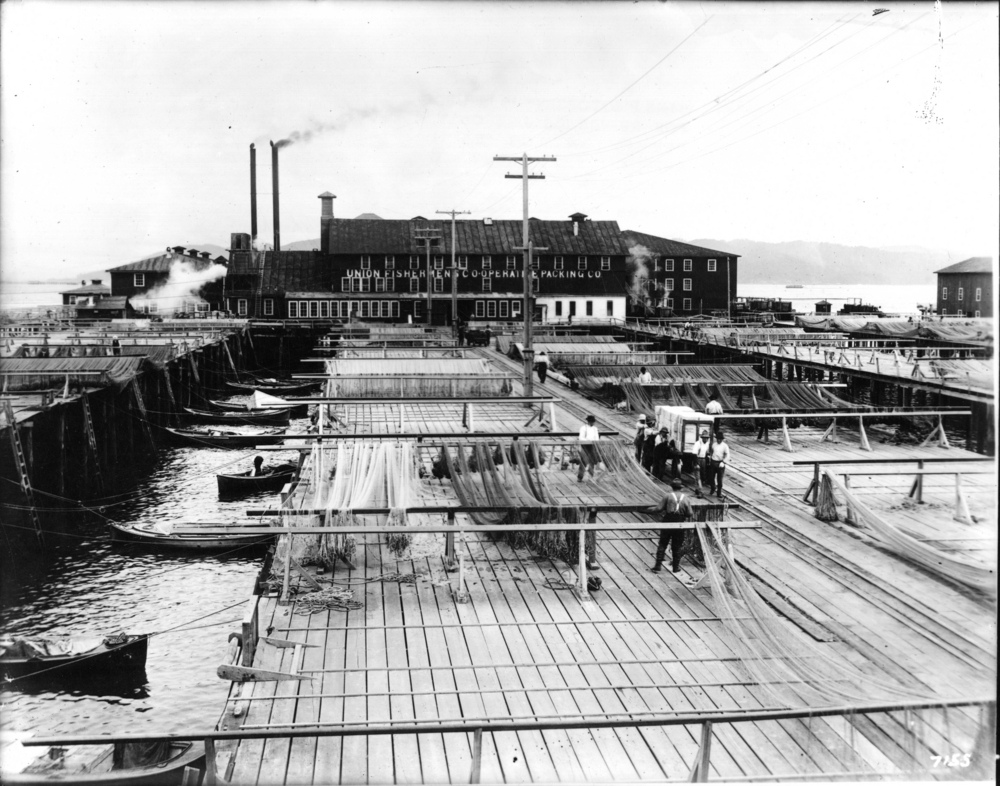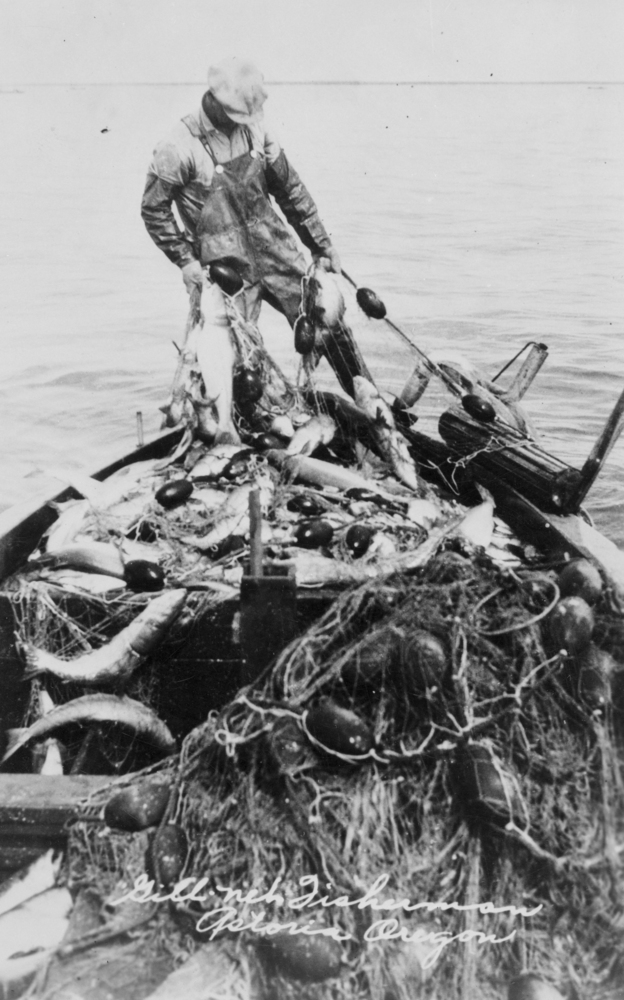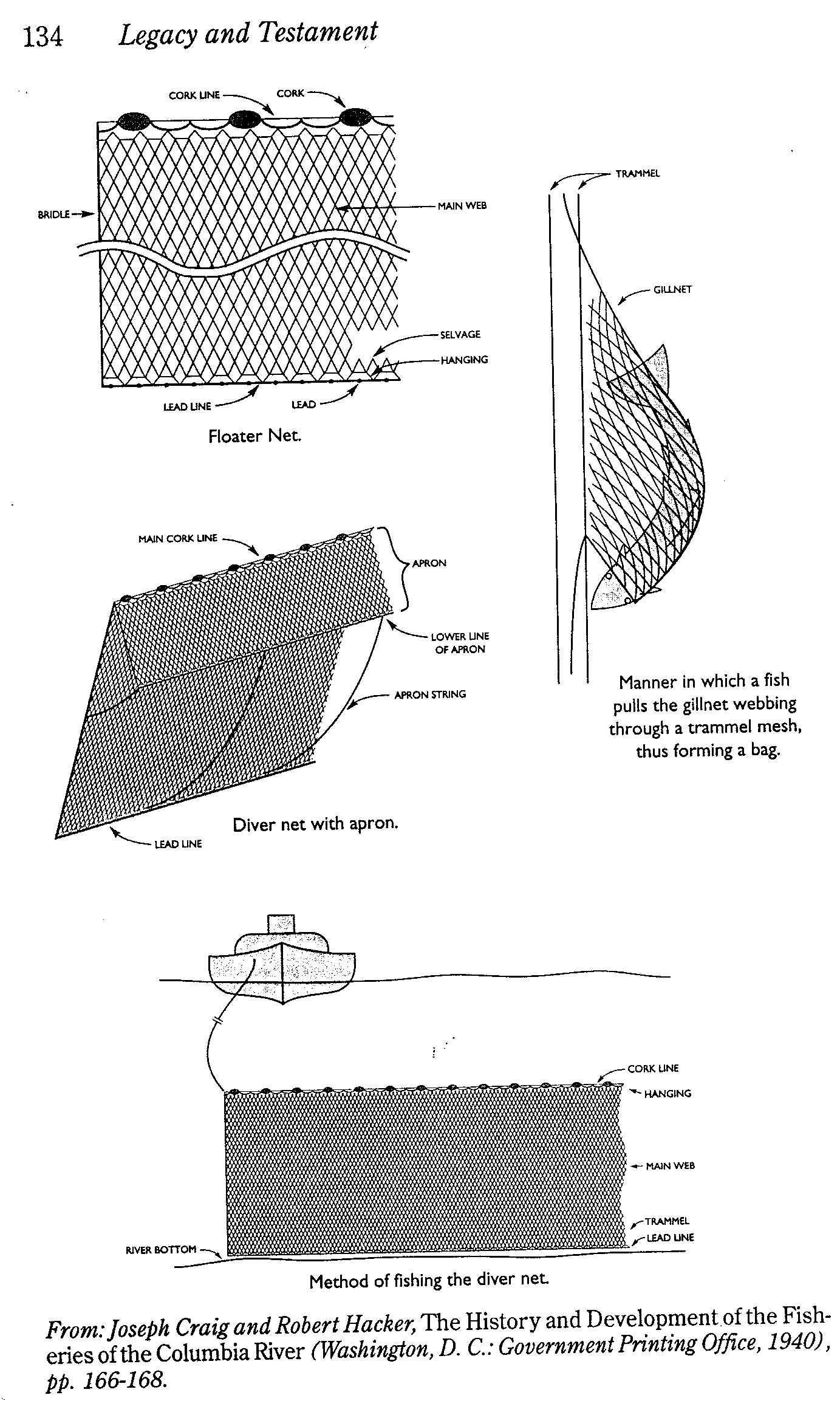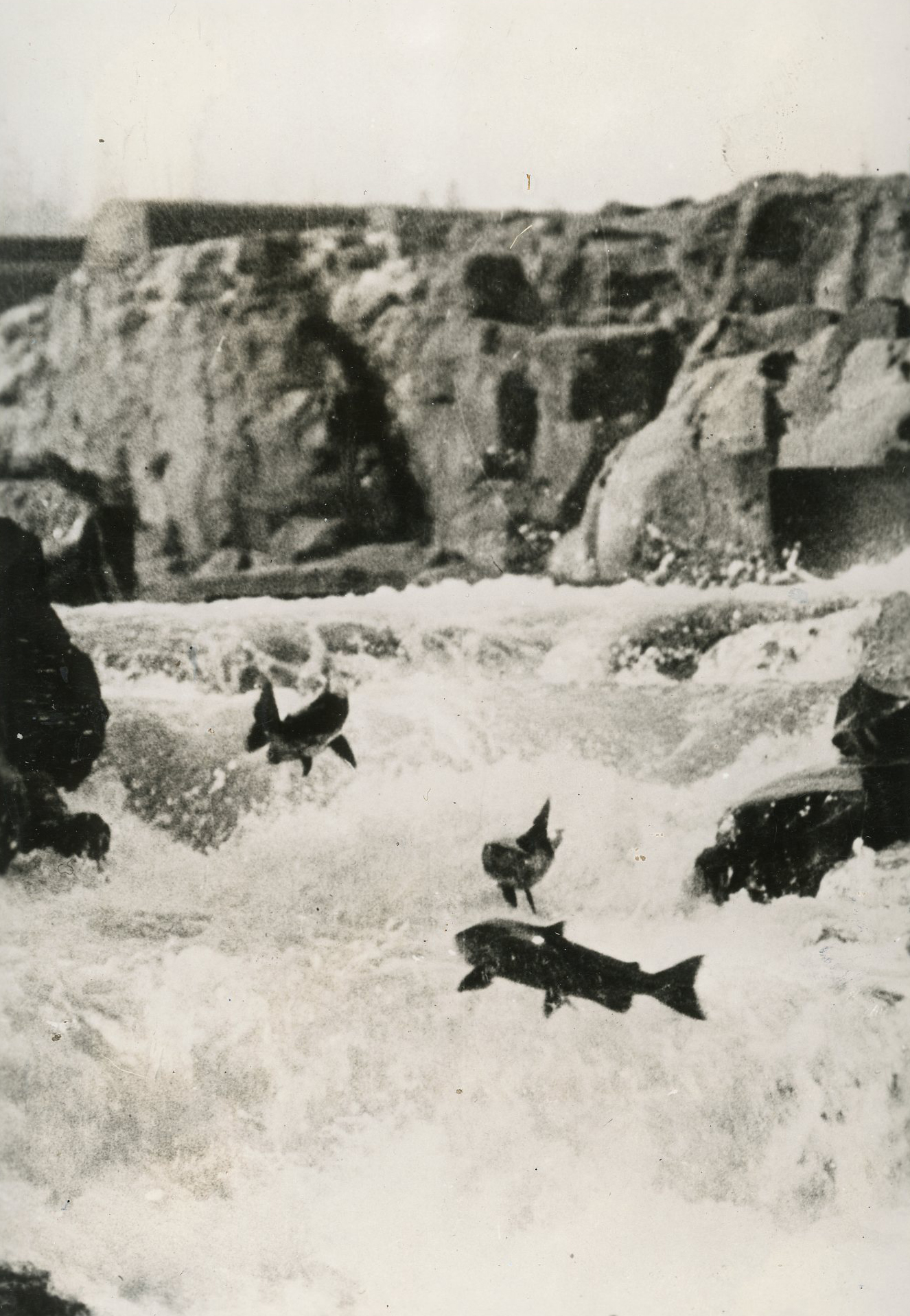In Astoria in 1897, some 200 gillnet fishermen formed the Union Fishermen's Cooperative Packing Company (Union Fish). The enterprise grew out of two years of disputes between gillnetters and local fish packers over salmon prices and fishing practices.
By the mid-1880s, people were already calling Astoria the fishing capital of the world because of the huge catches of salmon being hauled from the river. In 1874, the first fish cannery opened in town; six years later, there were fourteen canneries; and by 1883, thirty-nine canneries operated along the lower Columbia River. More than 630,000 cases of salmon were packed in 1883, the equivalent of 43 million pounds.
In this setting, the canneries and the fishermen became engaged in an economic power struggle. Among the fishers and cannery workers, there was a saying: "A salmon head is worth a buck but a man's head is worth nothing." Some fishermen claimed that the canneries amassed huge profits by keeping the prices to the fishermen low and by selling inferior fish to the public under the fancy spring Chinook label. Cannery managers claimed they were struggling to survive in a competitive market for canned salmon.
In 1895, Columbia River Fisherman's Protective Union members, many of them foreign-born and most of them Finnish, demanded that the canneries pay them no less than five cents a pound for Chinook salmon. Initially, the cannery owners had offered four and a half cents a pound but then reneged on their offer, further embittering the fishermen. In 1896, the fishermen went on strike after being offered less than the year before, and the cannery operators called in the National Guard to break the strike. That same year, some two hundred fishermen organized the Union Fishermen's Cooperative Packing Company in hopes of ensuring a fair return for their catch. Matt Korpela, a founder of Union Fish, gave this account in 1945:
"After we had patiently and faithfully endured the struggle of strike we ran out of food. Then we were forced to go fishing at the price the canneries offered, four and one-half cents. But when the canneries had got us fishing on the river they lowered the price almost immediately down to two cents a pound and set a limit of 500 lbs for each boat....Some gave up fishing, and others fished at the set price as there was no other work available at that time. The strike...was a learning experience in the rights of the fishermen. The unanimous decision...was 'Let's build our own cannery.'"
Each of the 200 men put in a hundred dollars from his savings, and together they purchased a cannery site in Astoria on Basin Street. There they erected a 50-by-200-foot plant, complete with adjoining boat moorages and net racks. Because of the cooperative structure of the company, each fisherman "received not so much for each fish he delivered, but his share of the company's proceeds."
During the second season of the cannery's operation, the Cooperative marketed two labels, "Gillnetters Best" and "Cooperators Best," which became leading brands of Columbia River salmon. In the third year, Union Fish started mild-curing (pickling) salmon, and in 1903, the board of directors authorized construction of a cold storage plant. Union Fish continued to do well as it extended its operations to the coast, Grays Harbor, and up the Columbia River to Ellsworth, Washington, near where I-205 crosses the Columbia today.
Throughout its first fifty years of operation, Union Fish supported developing hatchery programs, rehabilitating fish runs, reducing pollution, and promoting research in the preparation of new fisheries products. Ed Niska, who was a fish biologist for the Oregon Department of Fish and Wildlife, praised the "firm's practical leadership experience in the competitive enterprise of processing and marketing fish."
The Union Fishermen's Cooperative remained a fishermen-owned business until 1950, when it was sold to Seattle fishing magnate Nick Bez of Peter Pan Seafoods. The old Union Fish cannery is now the site of the Cannery Pier Hotel.
-
![]()
Union Fish Cannery.
Oregon Historical Society Research Library ba008274.
Related Entries
-
![Columbia River Fisherman's Protective Union]()
Columbia River Fisherman's Protective Union
The Columbia River Fishermen's Beneficial Aid Society was organized on …
-
![Gillnet fishing]()
Gillnet fishing
A gillnet is used by fishermen throughout the world to catch various sp…
-
![Salmon]()
Salmon
The word “salmon” originally referred to Atlantic salmon (Salmo salar),…
Related Historical Records
Map This on the Oregon History WayFinder
The Oregon History Wayfinder is an interactive map that identifies significant places, people, and events in Oregon history.
Further Reading
Holbrook, Stewart. The Columbia. San Francisco: Comstock Editions, 1956.
McKinney, Sam. Reach of Tide, Ring of History. Corvallis: Oregon State University Press, 1994).
Niska, Ed. "Astoria's Union Fish." Cumtux. 8:2 (Spring 1988): 23-36.
Smith, Courtland L., Salmon Fishers of the Columbia. Corvallis: Oregon State University Press, 1980.
Union Fishermen's Cooperative "Story of Two Hundred Fishermen." 50th Anniversary, 1896-1946.




